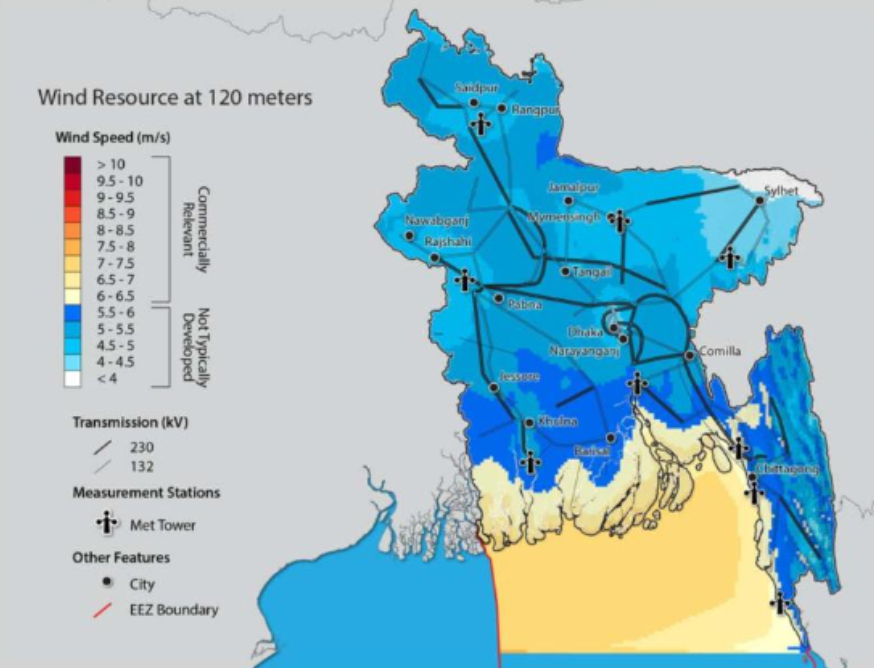
The study awarded to BLIX and its joint venture partners is part of the pathway towards this target.
Bangladesh has identified 26 potential blocks in both deep and shallow seas in the Bay of Bengal.
A previous National Renewable Energy Laboratory (NREL) study discovered that the country has wind speeds of 5.75-7.75 m/s.
In the pre-feasibility study, the project team will assess which of these 26 blocks have the best potential for wind energy.
First, a site selection methodology specific to the Bay of Bengal and Bangladesh power system will be developed, based on the most up-to-date offshore wind generation technologies. Second, the costs to implement offshore wind farms in the Bay of Bengal will be high-level analysed.
During the Detailed Feasibility study, the two most prospective blocks will be further investigated. This will include the identification of the key requirements to implement offshore wind projects, a study of the power system, and the development of a solution to connect the wind farm(s) to the grid.
Additionally, a comprehensive economic/financial assessment of these offshore wind projects will be prepared and proposals for technical and regulatory support to deploy offshore wind farms will be created. To ensure the success of the study, it is essential to share the findings with local stakeholders via dissemination, BLIX said.
BLIX’s role in the project is to provide technical and engineering expertise during both the Pre-Feasibility and Detailed Feasibility phases.
During the Pre-Feasibility phase, BLIX will use GIS tools and collected data to identify potential offshore wind energy development zones.
BLIX will create a scoring methodology to qualitatively assess possible areas and score them based on site characteristics and possible conflicts. The Netherlands-based consultancy will also create a technology catalogue to present the current and future trends in offshore wind and applicable and feasible technologies to the selected zones.
During the Detailed Feasibility phase, BLIX will optimize the wind farm’s layout and design the foundation structures for wind turbines and substations.
The company will also review existing metocean and other available site data, which will be used to inform on the foundation and other designs. Finally, it will develop an O&M strategy for the selected zones and estimate the costs of the wind farm with its in-house cost database and LCoE model. This model can be used for financial and economic analysis.
”BLIX has extensive experience working with governments to define the offshore wind development zones. This project will extend our existence in the South Asia market and will give a chance to transfer our knowledge to define successful tendering mechanisms by creating feasible projects,” Bayram Mercan, BLIX Project Manager.